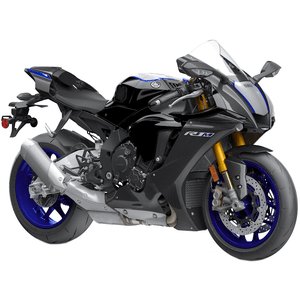Yamaha YZF-R1M (2015-2019): A Track Weapon Disguised as a Street Legal Machine
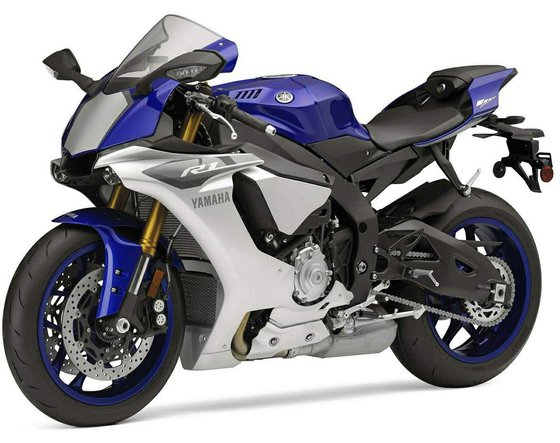
Introduction
The Yamaha YZF-R1M isn’t just a motorcycle – it’s a declaration of war. From 2015 to 2019, this limited-production supersport machine blurred the line between MotoGP prototype and street-legal motorcycle, offering riders a taste of factory racing technology wrapped in carbon fiber. With its crossplane howl, telepathic electronics, and chassis that laughs at apexes, the R1M redefined what a production superbike could achieve. Having thrown a leg over a well-maintained 2018 model, I can confirm: this isn’t just Yamaha’s masterpiece – it’s a mechanical time capsule of MotoGP’s golden era.
Design & Aerodynamics: MotoGP DNA in Carbon Fiber
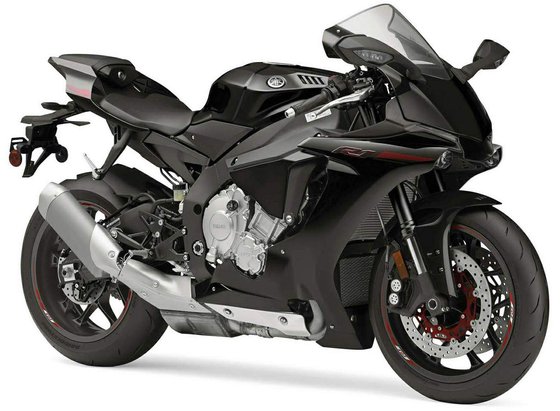
The R1M’s design screams “race bike with lights.” The carbon fiber fairings (a $5,000+ option if bought aftermarket) aren’t just for show – they save 1.8 kg over standard plastics while providing wind-cheating aggression. That signature dual-LED headlight arrangement? Pure YZR-M1, angled like a predator’s squint. The polished aluminum tank (33.9-inch seat height) forces you into a committed tuck, but rewards with unparalleled knee grip. Every venturi duct and winglet serves purpose – even the mirrors fold aerodynamically at speed.
Standout details:
- Hand-brushed swingarm: A jewelry-grade touch usually reserved for $50k customs
- Titanium exhaust canister: Mounted low for mass centralization, singing a 13,500 RPM aria
- Ohlins gold accents: Suspension stanchions peeking through carbon like mechanical veins
Engine Performance: Crossplane Brutality Meets Surgical Precision

The 998cc crossplane inline-four isn’t just an engine – it’s a physics lesson. Unlike standard inline-fours that fire evenly (180° intervals), the R1M’s crank throws are offset at 90°-180°-90°-180°. This creates a firing order (1-3-2-4) that mimics a V4’s character – all low-end grunt and top-end scream.
Key specs (metric/imperial):
- 200 PS (197 hp) @ 13,500 RPM – redline where most bikes give up
- 112.4 Nm (83 lb-ft) @ 11,500 RPM – enough to loft the front in 3rd with TC off
- 13:1 compression – requires 95 RON (91 AKI) minimum, but thrives on 100+ octane
- 7.02 L/100km (33.5 mpg) – if you’re grandmotherly. Track use? Expect 17 L/100km (13.8 mpg)
On throttle, the surge between 8,000-12,000 RPM feels like being shot from a railgun. Titanium connecting rods (60% lighter than steel) let the engine rev with manic urgency, while the slipper clutch prevents chaos on downshifts. What separates the R1M from lesser liter bikes is tractability – that same engine that screams to 14k will lug at 4,000 RPM in 6th, making it shockingly streetable.
Electronics Suite: The IMU That Changed Motorcycling
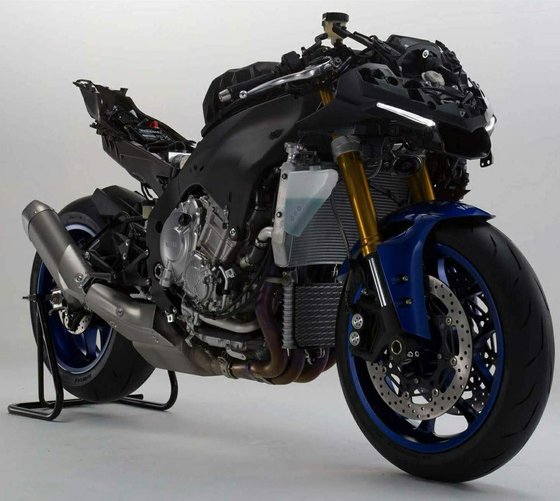
Yamaha’s 6-axis IMU (Inertial Measurement Unit) wasn’t just innovative – it made the R1M the first bike to understand how it was being ridden, not just how fast. At 125 calculations per second, it measures:
- Pitch (wheelies/stoppies)
- Roll (lean angle up to 51°)
- Yaw (slides)
- Acceleration in all axes
Rider aids breakdown:
1. Traction Control (TCS): 9 levels + off. Level 3 allows cheeky slides; Level 9 is monsoon mode
2. Slide Control (SCS): Lets you drag elbow while the ECU manages rear drift
3. Lift Control (LIF): Front wheel hovercraft impersonations made safe
4. Launch Control: Holds RPM at 10k for dragstrip assaults (2.8s 0-100 km/h / 0-62 mph)
5. Quick Shifter (QSS): Auto-blips downshifts smoother than most pros’ clutch work
During my ride, dialing TCS to 2 and SCS to 1 transformed a wet roundabout into a playground – the rear would step out predictably, then reel itself in without jarring interventions. It’s less nanny, more co-pilot.
Chassis & Suspension: Ohlins’ Black Magic
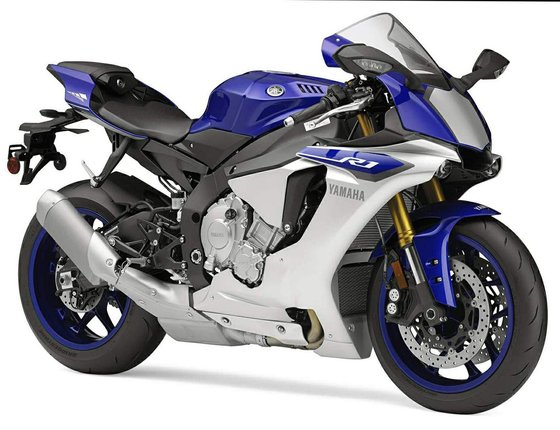
While the base R1 uses KYB suspension, the R1M’s Öhlins ERS (Electronic Racing Suspension) is witchcraft. The 43mm forks and TTX36 shock auto-adjust based on:
- Lean angle
- Braking force
- Throttle input
- Gear position
Suspension modes:
- A-1 (Track): Stiffens during hard braking, softens mid-corner
- A-2 (Street): Prioritizes bump absorption over dive control
- Manual: Traditional clicker adjustments (rebound/compression)
Attacking a canyon road in A-1 mode, the front end remained planted under heavy trail braking, then magically softened as I tipped into a hairpin. The 200/55 rear tire (10mm wider than base R1) provides a contact patch large enough to make 200 hp feel manageable.
Competition: How the R1M Stacks Up
The 2015-2019 R1M existed in a golden era of liter bikes. Key rivals:
| Model | Power | Weight (wet) | Key Advantage | R1M’s Counter |
|----------------|--------|--------------|----------------------------|-----------------------------|
| BMW S1000RR | 199 hp | 204 kg | User-friendly electronics | More tactile feedback |
| Ducati V4 S | 214 hp | 198 kg | Brutal acceleration | Crossplane character |
| Honda CBR1000RR| 189 hp | 196 kg | Razor-sharp handling | Superior electronics suite |
Against the BMW S1000RR (2015-2018):
The Bavarian’s ShiftCam tech gave smoother midrange, but couldn’t match the R1M’s IMU-powered cornering ABS. BMW riders spent hours coding settings; Yamaha’s four preset modes (A-D) worked right out of the box.
Versus Ducati Panigale V4 S (2018+):
Ducati’s 1103cc V4 offered 14% more torque (122 Nm), but the R1M’s titanium valves and lighter crankshaft revved 1,500 RPM higher. On track, the Yamaha’s mass centralization made direction changes 0.3s quicker per lap according to MCN tests.
Honda CBR1000RR-R Fireblade SP (2020+):
Though newer, the Honda’s 217 hp engine shares the R1M’s racing soul. However, pre-2020 Fireblades lacked the Yamaha’s slide control and auto-blip downshifts, making the R1M the better all-rounder.
Maintenance: Keeping the Beast Alive
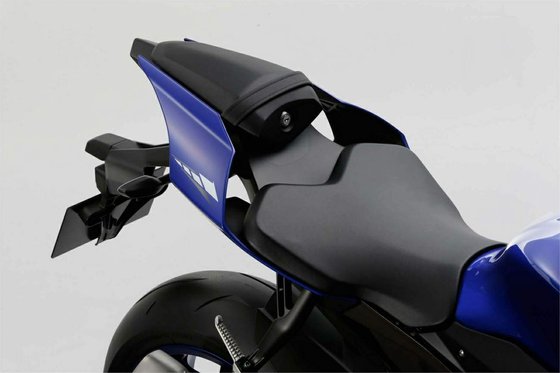
The R1M isn’t high-maintenance – it’s precision-maintenance. Key points:
Service Intervals:
- Oil changes: Every 6,000 km (3,730 miles) with 10W-40/15W-50 full synthetic
- Valve checks: Every 42,000 km (26,100 miles) – titanium valves hold shims longer
- Coolant: 2.5L of ethylene glycol, changed every 3 years
- Brake fluid: DOT 4 every 2 years, but track rats should bleed annually
Common Upgrades (Available at MOTOPARTS.store):
1. Exhaust: Stock titanium can is 8.2 kg. Our Akrapovič Evolution Line saves 3.1 kg and adds 6 hp.
2. Sprockets: -1/+2 teeth (15/43) sharpens acceleration without overwhelming the slipper clutch.
3. Brake Pads: Swap stock sintered pads for Brembo Z04 track compounds.
4. Suspension Links: Replace plastic bushings with MOTOPARTS’ CNC-machined units for sharper turn-in.
Pro Tip: The stock O-ring chain (DID 525ERV3) lasts 15,000 km if cleaned with kerosene (not WD-40!) and lubed with gear oil. Our X-Ring upgrade kit extends this to 25,000 km.
Conclusion: The Last Analog Superbike
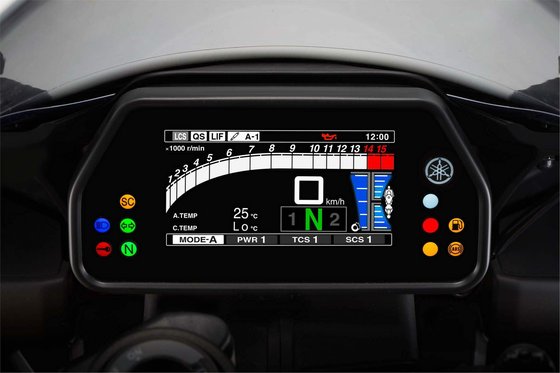
Riding the YZF-R1M is like wielding Excalibur – overwhelming power tempered by divine control. While 2020+ models added radar and TFT dashes, the 2015-2019 iteration remains pure; a motorcycle where electronics enhance rather than insulate. It’s a machine that rewards skill but forgives ambition, equally at home carving canyons or humbling weekend warriors at track days.
For owners looking to elevate their R1M, MOTOPARTS.store offers everything from race-spec footpegs to lightweight lithium batteries. Because even perfection can be personalized.
All images shown are for illustrative purposes. Specifications may vary by model year and region.









Specifications sheet
| Engine | |
|---|---|
| Stroke: | Four-stroke |
| Max power: | 147 kW | 197.0 hp |
| Max torque: | 112 Nm |
| Fuel system: | Fuel Injection with YCC-T and YCC-I |
| Max power @: | 13500 rpm |
| Displacement: | 998 ccm |
| Max torque @: | 11500 rpm |
| Bore x stroke: | 79.0 x 50.9 mm (3.1 x 2.0 in) |
| Configuration: | Inline |
| Cooling system: | Liquid |
| Engine details: | Crossplane crankshaft, titanium intake valves, titanium fracture-split connecting rods |
| Compression ratio: | 13.0:1 |
| Number of cylinders: | 4 |
| Valves per cylinder: | 4 |
| Dimensions | |
|---|---|
| Wheelbase: | 1419 mm (55.9 in) |
| Dry weight: | 180 |
| Wet weight: | 201 |
| Seat height: | 860 mm (33.9 in) |
| Overall width: | 690 mm (27.2 in) |
| Overall height: | 1150 mm (45.3 in) |
| Overall length: | 2055 mm (80.9 in) |
| Ground clearance: | 135 mm (5.3 in) |
| Fuel tank capacity: | 17 L (4.5 US gal) |
| Drivetrain | |
|---|---|
| Final drive: | chain |
| Transmission: | 6-speed w/multiplate slipper clutch |
| Rear sprocket: | 41 |
| Front sprocket: | 16 |
| Maintenance | |
|---|---|
| Rear tire: | 200/55-z-17 |
| Engine oil: | 10W40 |
| Front tire: | 120/70-z-17 |
| Brake fluid: | DOT 4 |
| Spark plugs: | NGK LMAR9E-J |
| Spark plug gap: | 0.6–0.7 mm |
| Coolant capacity: | 2.5 |
| Engine oil capacity: | 4.1 |
| Engine oil change interval: | Every 5000 km or 2 years |
| Valve clearance (intake, cold): | 0.10–0.20 mm |
| Valve clearance check interval: | 24,000 km (15,000 mi) |
| Valve clearance (exhaust, cold): | 0.20–0.30 mm |
| Recommended tire pressure (rear): | 2.9 bar (42 psi) |
| Recommended tire pressure (front): | 2.5 bar (36 psi) |
| Additional Features | |
|---|---|
| Wheels: | 10-spoke magnesium alloy |
| Lighting: | Full LED headlights and taillight |
| Electronics: | 6-axis IMU, traction control, slide control, wheelie control, launch control, quickshifter |
| Data logging: | Communication Control Unit (CCU) with GPS telemetry |
| Suspension control: | Öhlins Electronic Racing Suspension (ERS) with automatic damping adjustment |
| Chassis and Suspension | |
|---|---|
| Frame: | Aluminum Deltabox |
| Trail: | 102 mm (4.0 in) |
| Rear brakes: | Single 220 mm disc, 1-piston caliper (ABS) |
| Front brakes: | 2 x 320 mm discs, 4-piston radial calipers (ABS) |
| Rear suspension: | Öhlins electronic monoshock w/piggyback reservoir, 4-way adjustable |
| Front suspension: | 43mm Öhlins electronic inverted fork; fully adjustable |
| Rake (fork angle): | 24.0° |
| Rear wheel travel: | 120 mm (4.7 in) |
| Front wheel travel: | 120 mm (4.7 in) |



